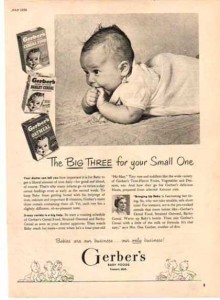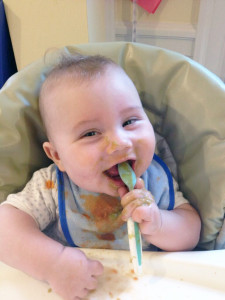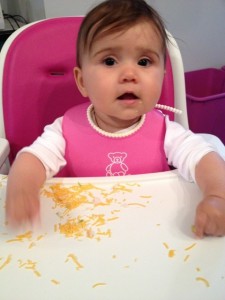Focus on Breastfeeding First
 During the first few weeks after birth, just focus on getting breastfeeding up and running – that’s enough. You may need to express milk in certain situations, but in general, just work on establishing a comfortable nursing relationship and milk supply through breastfeeding. Once breastfeeding is well established, you may consider expressing some breastmilk and introducing the bottle, perhaps around week three or four of your baby’s life.
During the first few weeks after birth, just focus on getting breastfeeding up and running – that’s enough. You may need to express milk in certain situations, but in general, just work on establishing a comfortable nursing relationship and milk supply through breastfeeding. Once breastfeeding is well established, you may consider expressing some breastmilk and introducing the bottle, perhaps around week three or four of your baby’s life.
Why 3 to 5 weeks?
A newborn’s sucking is reflexive until about 5 to 6 weeks, so introducing the bottle between 3 to 5 weeks is an optimal time, if bottle-feeding skills are required. Most babies will accept the bottle without much difficulty when it is introduced between 3 to 6 weeks. It may be more challenging to wait until later before introducing the bottle. Of course, not all babies need to take a bottle, and many babies can begin learning to drink from a spouted cup as early as 4 to 5 months, but this post is focused on parents who do want to introduce the bottle to their breastfed infant. Beginning to express milk around week three or four may establish and maintain a strong milk supply, if storing milk for the return to work is desired. Slowly beginning to store several ounces of milk every few days once baby is about a month old, will gradually create a stash of back up milk you’ll appreciate once you’re back at work.
Relax: Offer, Don’t Push!
Introduce the bottle in a stress-free, low-pressure manner. Let your baby draw the bottle nipple into his mouth – don’t force the nipple into the baby’s mouth. Try stroking the bottle nipple against baby’s cheek, then lips. See if he’ll turn slightly or open his mouth to seek out the nipple – called the rooting reflex. When the bottle nipple enters the baby’s mouth, angle the tip slightly upward, toward the roof of the mouth rather than pushing the nipple against the tongue.
If your baby cries or resists, take a break or try again later or the next day. Avoid creating a struggle or reinforcing a negative association with bottle-feeding.
Use Expressed Milk
If your baby is exclusively breastfed, don’t casually introduce formula “just to see if he’ll take it” or “to get him used to it”. This introduces foreign proteins (cow’s milk protein, or soy) unnecessarily, and also interferes with the breastfed infant’s normal intestinal flora. There is something very special and beneficial about the immune and digestive system of an exclusively breastfed baby. Avoid introducing anything other than breast milk during a baby’s early months unless medically necessary.
Offering the Very First Bottles
When preparing the very first bottle for a breastfed baby, start with just one ounce of expressed milk. This way, you won’t end up wasting milk if baby doesn’t take the bottle, or doesn’t finish a larger amount. If you’re offering just an ounce and baby finishes it and seems to want more, you can either offer another ounce, or put baby to the breast to “finish” their meal.
Continue offering a small (one ounce) bottle each day until the baby seems fairly comfortable with the bottle feeding process and finishes it reliably, then gradually increase the volume, moving to 1.5, then 2, then 2.5, then 3 ounces over several weeks’ time.
Three to four ounces of milk, given over 15-30 minutes, should be plenty for most babies at 2 to 4 months. Babies gradually increase their volume slowly over the next few months, typically “maxing out” around 5 to 6 ounces at 5 to 6 months. Don’t be in a rush to increase the milk volume just because your baby finishes the bottle. If the volume seems to keep him content for a couple of hours, it’s probably the right amount of milk. Babies love to suck, and enjoy milk, and will often take more milk than perhaps they actually need, if it is continually offered. Finishing a bottle or being willing to drink more doesn’t necessarily mean your baby is still hungry.
Helping Your Baby Adjust to the Bottle
Some babies will take a bottle easily the first time, while other babies require more time to become comfortable with accepting a very new way to eat. Be patient, calm, positive and consistent. This is a new skill for your baby (and for you). Consider this: If we took an exclusively bottle fed baby and put him to the breast, would we expect him to know exactly what to do the first time, without prior experience or practice? He might, but far more likely, would take a little time to get used to this new way of eating.
Some babies are more willing to drink from a bottle when drowsy, or when not frantically hungry. You might try nursing for a few minutes, then switching to the bottle half-way into the feeding.
Some babies are more willing to take the bottle from someone other than mom. Have a family member or helper try offering the bottle, either while sitting, or while walking around the room with the baby sitting up and facing out – the movement and distraction may be helpful.
Some breastfed babies are more willing to take the baby from mom, since they already associate mom with milk and with feeding. See more tips for the reluctant bottle feeding baby.
What counts as “Taking the Bottle”?
Offer the bottle once a day until your baby seems to begin drinking an ounce or two easily (this may be the very first and second tries – right off the bat.). Then you may switch to one bottle every other day or so. It’s a good idea to offer one bottle every couple of days so that your baby remains comfortable with the skill.
If your baby can drink an ounce from the bottle without difficulty, that is successful. If they are able to transfer milk from the bottle effectively (and the skill remains familiar with regular practice), they have the ability to drink more if necessary, even if they don’t particularly love the bottle.
Beware of the Bottle Feeding “Vacation”
One of the biggest anxieties for a new mom as her return to work approaches, is the baby who will not take the bottle. If it’s important to you that your baby be able to drink a bottle reliably, make sure to keep it familiar. Don’t assume that because baby drank the bottle once, many weeks ago, it’s a checkmark in the “will-take-a-bottle” box and the skill will be retained indefinitely. This skill needs be kept familiar or all bets are off.
Avoid the “bottle feeding vacation” or going 5 or 7 days without a practice bottle. Some babies will do fine with a rare or occasional bottle, but other babies, even those who had previously taken a bottle readily, will refuse after many days “vacation” when the bottle is re-introduced. Once the bottle is introduced, keep it familiar. Every other day, or about 3 or 4 bottles a week is usually enough to do so. If you don’t need to do a full feeding with the bottle, just one ounce in the bottle is enough to “count” as practice to keep it familiar. Give the ounce, and then finish the feeding at the breast.
Paced, Responsive Feeding Positions
Encourage family members and caregivers to bottle-feed with close physical contact, change positions several times throughout the feeding, and pause often to interact with your baby.
Babies should be bottle-fed in a semi-upright position with the bottle nipple almost horizontal (though filled with milk). This allows the baby to better control the flow and avoid being overwhelmed by too much milk. In the typical “reclined and cradled” bottle feeding position, the bottle milk will flow faster by gravity, and baby will need to drink faster in order to keep up with the flow. The more upright position will help pace the feeding better.
When baby pauses to rest or take a deeper breath, this is a cue for the care-giver to remove the bottle, talk to the baby, burp or take a little break from the bottle feeding. There’s no need to pull the bottle away from a baby who is actively sucking happily just because it’s been five minutes, or one ounce. Instead, wait for a natural pause to remove the bottle for a break, engage with eye contact or interaction, or a burp.
Remind caregivers to never prop a bottle – this can lead to choking or aspiration of milk. Babies deserve physical and social interaction during feeding. Finally, don’t put an older baby into a crib with a bottle of milk or juice. This is associated with increased incidence of ear infections and tooth decay.




